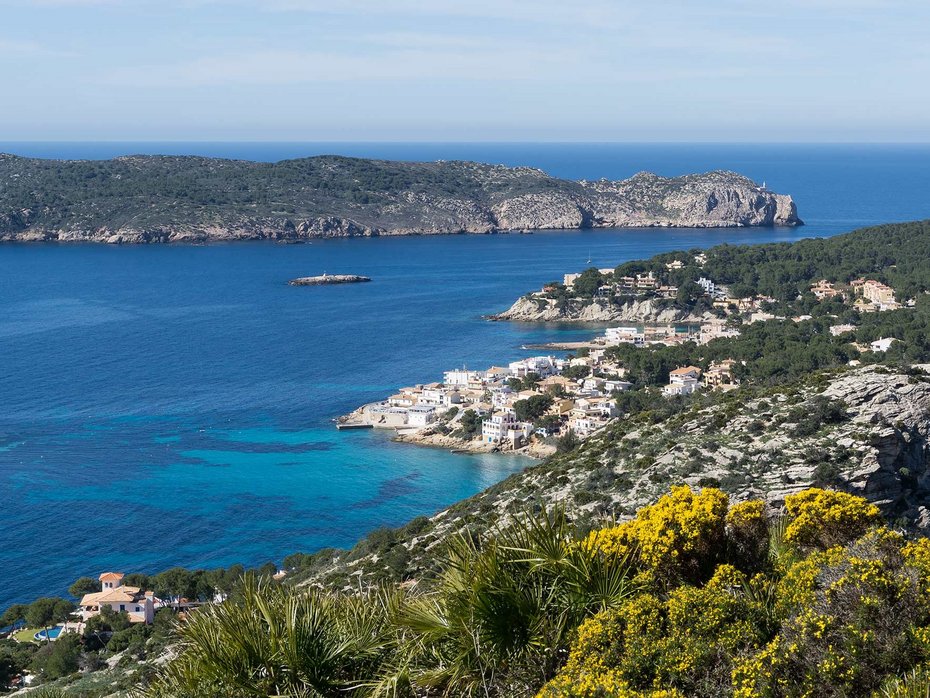Your own Mediterranean garden at home
Bring the Mediterranean flair home: Tips for a Mediterranean Majorquin garden full of memories of happy days. Let your holiday memories inspire you for an attractive garden design.

The memories of happy days on Mallorca may still be fresh or will be awakened again when you look at your holiday photos. If you can hardly wait for your next holiday on the Mediterranean and are also looking for ideas for an attractive garden design, you may be interested in a green kingdom in the Mediterranean style. The original will always be the most beautiful, but even a short holiday in your own garden can revive your spirits.
Sun-warmed natural stones, aromatic herbal scents, the sound of the sea: When creating a Mediterranean garden, it is not about copying the original landscape as faithfully as possible, but rather about being inspired by it. This prevents a lot of disappointment, because many plants in the Mediterranean are only partially frost-hardy and would quickly freeze to death in severe sub-zero temperatures. In some cases, they have to be replaced in the home garden with similar-looking but more robust plants. Even building materials that are permanent in the holiday area may prove to be problematic in the local climate. The question of frost resistance should be clarified before purchasing, for example when using natural stone, in order to avoid unpleasant and costly surprises.
Holiday magic in your own garden: Mediterranean flair with white walls and green oases
Whitewashed walls, which shine so beautifully against the blue summer sky in holiday photos, are also quite easy to create at home. The paint only needs to be freshened up now and again to ensure that the aesthetic appearance is maintained over time. Low dry stone walls are also beautiful, as they can be used to divide the garden into individual areas. They also represent small biotopes: the heat-loving lizards feel particularly at home there. Houseleek and low sedum species are well suited for greening. They store liquid in their succulent leaves and are therefore ideally suited to dry periods. The botanical name for the houseleek is "Sempervivum", which can be translated as "always living". The little survivor keeps this promise in most cases. Waterlogging is its greatest enemy, which is also true of many Mediterranean plants. Permeable soil is therefore very important.
Enchanting gravel beds: fragrant oases in the Mediterranean garden
Gravel beds imitate the sometimes quite barren mountain landscape of Mallorca. Here, in a sunny location, a small fragrant paradise of herbs and subshrubs such as calamintha nepeta, savory (Satureja montana), santolina chamaecyparissus, rosemary (Rosmarinus officinalis), sage (Salvia officinalis), lavender (Lavandula angustifolia) and many other "sun worshippers" thrives. They often react to an excess of nutrients with atypical growth and sometimes even with an increased susceptibility to diseases and pests. Silvery-gray hairs, needle-shaped foliage or waxy layers on the leaves are typical for many Mediterranean plants. This is how the plants protect themselves against the extreme conditions that often prevail in their locations.
Magical paths and fragrant oases: A Mediterranean garden to discover
In less frequented areas of the garden, a few natural stone stepping stones are sometimes enough to form narrow paths. In between, low plant cushions made from various types of thyme or lawn chamomile (Chamaemelum nobile) can weave a fragrant carpet. Even if they are not as hard-wearing as some lawns, they do not mind being walked on occasionally. Oregano (Origanum vulgare) is an excellent insect magnet. Children who are interested in nature in particular will enjoy watching the many different bees, bumblebees, butterflies and beetles that flock to its flowers to search for food. The undemanding hyssop (Hyssopus officinalis) is relatively rarely used in the garden, although it is a real perpetual bloomer and is extremely popular with insects. Its flowers are usually purple. But it also comes in white and pink varieties.
Grapevines and potted plants such as bay laurel (Laurus nobilis) are also typical of the Mediterranean ambience. It is best to use frost-resistant containers made of terracotta. However, they dry out more quickly than the soil in the garden. You should not underestimate the effort involved in watering in summer. Many potted plants cannot stay outside in the cold season and need a frost-free room to overwinter.
Magical details for the Mediterranean garden: colors, furniture and convivial evenings
Even seemingly small things can contribute considerably to the harmonious overall impression when designing a garden. The colors and patterns of awning fabrics, parasols, cushion covers and tablecloths have an effect that should not be underestimated. Fabrics in warm yellow and orange tones are just as suitable as patterns with herbal motifs or maritime elements. Garden furniture made of wicker or metal also go well with the Mediterranean style. In order to visually express the light attitude to life, it is important that tables and seating furniture do not appear too bulky. Decorative elements such as e.g. Ceramic products from the holiday destination, coloured tiles, tasteful water basins and wall fountains, for example, reinforce the Mallorca feeling in your own garden. Terrace coverings made of fine natural stone store heat and look good. However, some caution is advised with all types of limestone, as they are quickly attacked by acids.
Nights in the warm summer air by candlelight and the chirping of crickets can also be enjoyed in your own garden. It is best to be prepared and stock up on a small but fine supply of your favourite wines, as we all know you should celebrate the holidays as they come. Stylish glasses, pretty lanterns and small souvenirs from your Mallorca holiday round off the table decoration. The most important thing is still missing, however: good friends and beloved family members make the garden a meeting place where life is celebrated. Sometimes it may be a bit cramped at the table, but that is also part of the Mediterranean way of life.
